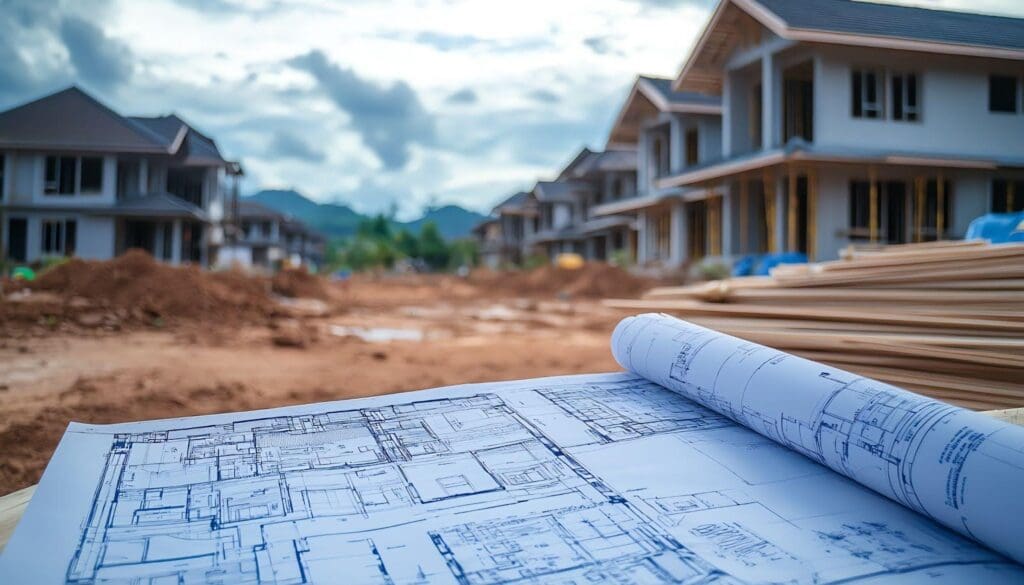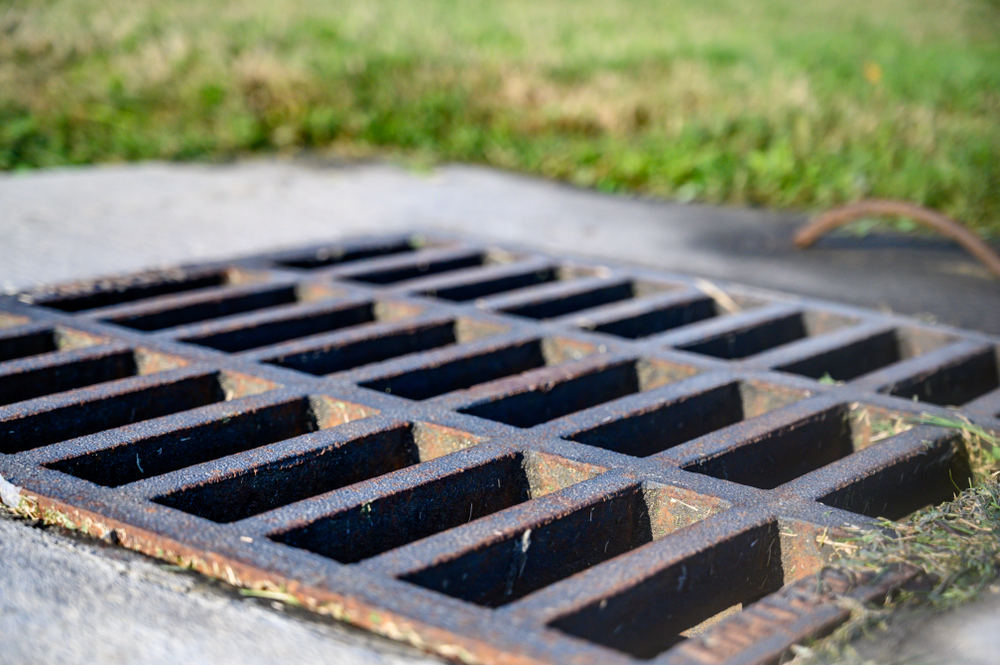Utah Code 19-5-108.3 (previously known as HB 507) introduces stringent regulations aimed at enhancing environmental protection and improving erosion control and stormwater management standards on construction sites.
As concerns about pollution, soil erosion, and water quality grow, Utah Code 19-5-108.3 aims to reduce the environmental harm caused by runoff and sediment displacement through stricter guidelines and heightened oversight.
Understanding Utah Code 19-5-108.3 is essential for contractors, developers, municipalities, and property owners. Compliance helps avoid fines, stop-work orders, and legal issues while protecting the environment, preserving water quality, and maintaining a positive industry reputation.
What is Utah Code 19-5-108.3?
Utah Code 19-5-108.3 is a landmark piece of legislation designed to strengthen stormwater management standards and enforce better erosion control practices. Lawmakers introduced the HB 507 to address widespread environmental damage caused by inadequate sediment control, poor waste disposal, and unregulated runoff from construction activities.
One of the primary goals involves strengthening erosion control measures by mandating the use of high-quality barriers, blankets, wattles, and other Best Management Practices (BMPs). These tools help minimize soil loss and prevent sediment from migrating off-site, thereby protecting natural waterways and surrounding ecosystems from contamination.
The legislation requires construction sites to employ effective, durable BMPs tailored to their specific conditions, ensuring comprehensive and efficient erosion control.
Another key objective of Utah Code 19-5-108.3 is enhancing stormwater management standards to prevent pollutants from contaminating water sources. It emphasizes the importance of effective filtration methods that capture harmful substances before they reach storm drains, rivers, and lakes.
Construction sites must now implement improved runoff management techniques designed to reduce contamination risks and promote cleaner, safer waterways. By setting higher standards for stormwater handling, Utah Code 19-5-108.3 aims to mitigate the negative impact construction activities can have on local water quality.
Additionally, this legislation seeks to establish advanced reporting requirements that promote thorough inspection protocols and ensure compliance remains consistent throughout a project’s lifecycle. Utah Code 19-5-108.3 requires construction professionals to maintain detailed, up-to-date documentation that tracks inspection results, corrective actions, maintenance efforts, and BMP implementation.
The legislation demands more meticulous record-keeping, enhancing transparency and accountability across the industry, and allowing regulators to monitor compliance more effectively.
Promoting accountability and transparency remains a central theme of Utah Code 19-5-108.3. Regular compliance reporting is now a requirement, making it easier for regulatory agencies to assess adherence and ensure environmental standards are consistently met.
The code prioritizes documentation and monitoring and creates a framework that holds construction site operators responsible for maintaining compliance from start to finish. This focus on accountability not only helps protect the environment but also fosters greater trust between developers, regulators, and the communities they serve.
Key provisions of Utah Code 19-5-108.3
To comply with Utah Code 19-5-108.3, construction sites must develop detailed Stormwater Pollution Prevention Plans (SWPPP) that address essential aspects of site management, including slope stabilization, sediment barriers, and vegetation control.
These plans must be tailored to the specific conditions of each site and include clear maintenance procedures and monitoring strategies to ensure ongoing compliance.
Frequent inspections are now mandatory, particularly during high-risk periods such as heavy rainfall or major earth-moving operations. Inspectors must assess the effectiveness of BMPs, document findings, and make necessary adjustments to ensure compliance.
Thorough, accurate reports are required to track compliance efforts and identify areas needing improvement. This continuous monitoring and documentation process helps prevent minor compliance issues from escalating into costly violations or environmental harm.
Utah Code 19-5-108.3 also establishes stricter guidelines for erosion control, sediment management, and pollutant containment. Contractors must implement effective BMPs, including silt fences, wattles, erosion blankets, hydroseeding, and biodegradable materials.
Enhanced requirements for inlet protection, dewatering, and washout containment ensure contaminants are properly filtered and prevented from entering storm drains, rivers, and lakes. Additionally, contractors must follow precise procedures for handling collected water and disposing of cementitious waste to minimize environmental impact.
Under Utah Code 19-5-108.3, maintaining accurate, up-to-date records remains essential. Construction sites must produce comprehensive reports documenting inspections, BMP installations, maintenance activities, and corrective actions.
Well-organized documentation simplifies audits, improves accountability, and helps construction managers quickly identify areas for improvement. Detailed record-keeping demonstrates compliance during inspections and protects companies from legal issues and fines.
Non-compliance with Utah Code 19-5-108.3 results in severe penalties, including fines, stop-work orders, legal actions, and reputational damage. Regulatory agencies may impose financial penalties for inadequate erosion control, insufficient documentation, or failure to maintain compliance.
Persistent violations escalate to stop-work orders, halting construction until issues are resolved, causing costly delays and project disruptions. Continued negligence may result in lawsuits, particularly if environmental damage occurs, further harming a company’s credibility and finances.

Preparing for compliance with Utah Code 19-5-108.3
Achieving compliance with Utah Code 19-5-108.3 requires a proactive and strategic approach that addresses all aspects of erosion control, stormwater management, inspections, and documentation.
Staying ahead of these requirements involves conducting regular audits, collaborating with certified inspectors, implementing effective BMPs, and maintaining precise records.
Conducting comprehensive compliance audits is essential for ensuring that BMPs, stormwater management practices, and reporting processes align with the updated standards set by Utah Code 19-5-108.3.
Routine evaluations help identify deficiencies and areas requiring improvement before they escalate into violations. Promptly addressing these issues not only ensures compliance but also minimizes potential disruptions to the project’s progress.
Partnering with RSI-certified inspectors provides valuable expertise and guidance throughout the compliance process. These professionals possess specialized knowledge of current regulations and offer reliable assessments to ensure your erosion control measures remain effective.
Collaborating with certified inspectors helps construction managers receive accurate evaluations, implement improvements when necessary, and maintain adherence to the current standards.
Implementing effective erosion control measures plays a crucial role in maintaining compliance. Using approved materials and techniques designed to meet these requirements ensures your BMPs function efficiently throughout the project. Regular maintenance of these erosion control measures helps prevent runoff issues, protect local waterways, and keep the construction site compliant.
Consistently monitoring and adjusting BMPs as needed promotes long-term stability and environmental protection.
Maintaining accurate, up-to-date documentation is essential for demonstrating compliance and simplifying audits. Detailed records of inspections, maintenance activities, and adjustments provide a clear trail of your compliance efforts.
Keeping thorough logs ensures transparency during regulatory reviews and allows construction managers to quickly address issues or prove adherence to the standards established by Utah Code 19-5-108.3.
Preparing for compliance with Utah Code 19-5-108.3 requires a well-rounded strategy that prioritizes continuous monitoring, collaboration with certified experts, consistent use of approved BMPs, and meticulous documentation. By adhering to these practices, construction professionals can effectively avoid fines, maintain smooth operations, and protect their projects from costly setbacks.
The benefits of compliance with Utah Code 19-5-108.3
Achieving compliance with Utah Code 19-5-108.3 offers numerous benefits that extend beyond merely avoiding penalties. Adhering to the bill’s standards helps protect your financial interests, enhance environmental conservation, strengthen your professional reputation, and ensure long-term project stability.
Maintaining compliance with Utah Code 19-5-108.3 prevents financial setbacks that often result from fines, legal challenges, or project delays caused by inadequate erosion control measures. By following the guidelines and implementing approved BMPs, construction professionals can avoid unnecessary expenses and keep their projects on track.
Implementing effective BMPs also plays a crucial role in promoting environmental protection. Compliant erosion control methods help minimize pollution, preserve water quality, and support sustainability efforts.
Following the standards outlined in Utah Code 19-5-108.3 demonstrates a commitment to protecting natural resources and reducing the negative impact of construction activities on surrounding ecosystems.
Compliance also contributes to building a strong, credible reputation. Clients, regulators, and community members recognize the importance of adhering to environmental standards and appreciate companies that prioritize responsible practices.
Establishing a track record of compliance boosts credibility, making it easier to attract new business opportunities while maintaining positive relationships with regulatory agencies.
Adopting effective erosion control measures enhances the stability and integrity of your project. Properly maintained BMPs help prevent runoff issues, erosion, and sediment displacement, resulting in more durable construction sites and reduced maintenance costs. Preventative measures implemented early on contribute to smoother operations and more successful project outcomes.
Meeting the requirements of Utah Code 19-5-108.3 ultimately supports environmental protection, financial efficiency, and professional credibility. Committing to these standards allows construction professionals to protect their projects from fines, disruptions, and reputational damage while ensuring sustainable and responsible development.
Partner with Erosion Control Services for compliance

Navigating the requirements of Utah Code 19-5-108.3 demands expertise, consistency, and a proactive approach to erosion control and stormwater management. Compliance isn’t simply about avoiding fines and legal repercussions — it’s about protecting natural resources, enhancing your reputation, and ensuring your project runs smoothly from start to finish.
At Erosion Control Services, we specialize in helping contractors, developers, and property owners confidently meet the new, stringent standards. From creating comprehensive SWPPP plans to implementing advanced BMPs, conducting RSI-certified inspections, and maintaining meticulous documentation, our team ensures your project remains compliant at every stage.
Working with Erosion Control Services means you’re partnering with professionals who understand the complexities of Utah Code 19-5-108.3 and prioritize your success. Our solutions are designed to protect your project, preserve the environment, and promote long-term sustainability.
Don’t risk costly penalties, delays, or damage to your reputation. Contact Erosion Control Services today to learn how we can help you achieve full compliance with Utah Code 19-5-108.3 and ensure your project’s success. Let’s work together to create a safer, more responsible future for your construction projects.



